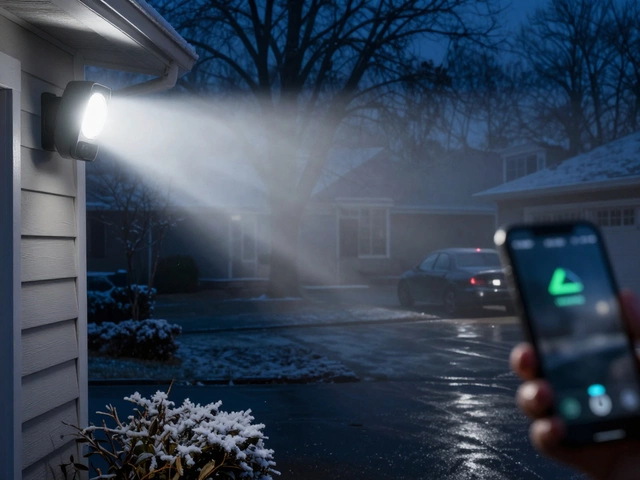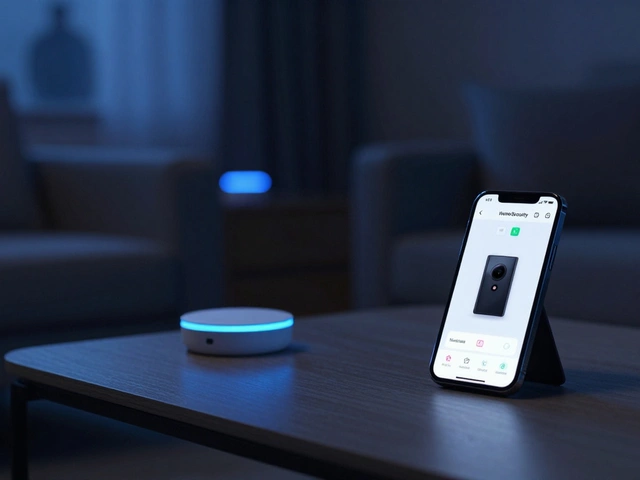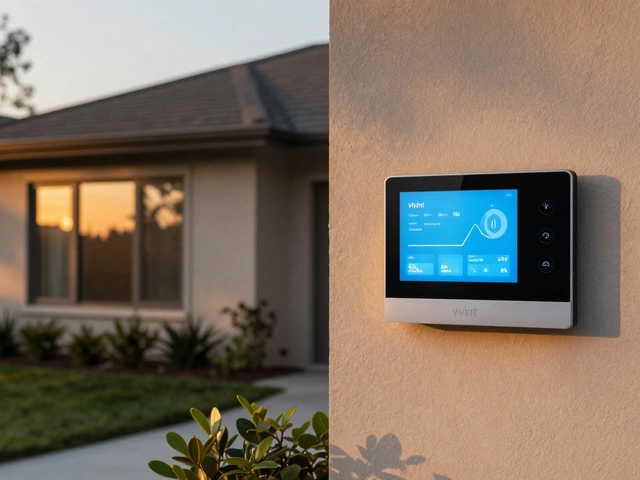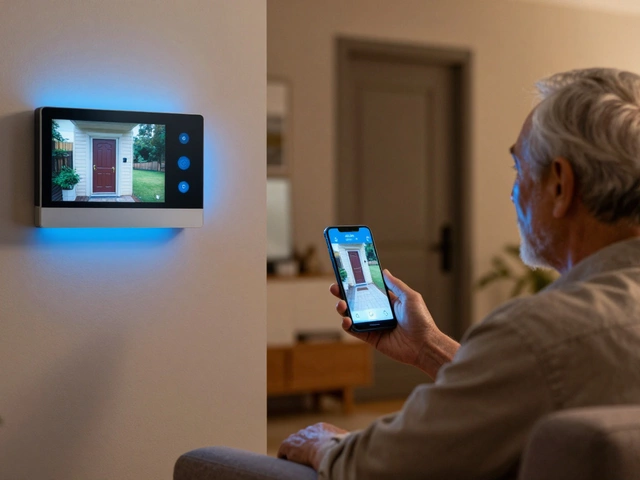If you've ever searched online for baby monitors, you've probably stumbled onto scary warnings about 'radiation'. It sounds like something from a sci-fi movie, but what are we really dealing with here? Let’s get straight to it: most baby monitors use radiofrequency (RF) signals, just like your home Wi-Fi or your cell phone. We're not talking about nuclear power plant stuff—it's more like the invisible waves that send your texts or stream your late-night shows.
So what does this mean for your baby? Good question. There’s a lot of chatter and way less clear info. Most of us stick a monitor close to our baby’s crib and rarely think twice. But if you pause and consider things like distance, type of monitor, and how long it’s on, you can make some really safe choices. If you’ve ever wondered whether wireless or analog is better, or if video screens mean more risk, hang tight. There’s a practical breakdown coming that will help you sort myth from fact—and keep your nursery low-stress and low on unnecessary exposure.
- What Radiation Are We Even Talking About?
- How Baby Monitors Actually Work
- What Do Studies Really Say About EMF and Babies?
- Types of Baby Monitors: Not All the Same
- Smart Ways to Cut Down on Exposure
- Do You Even Need to Worry? Key Takeaways
What Radiation Are We Even Talking About?
So let’s clear something up right away: when people worry about baby monitor radiation, they're talking about electromagnetic fields, or EMF. This includes both electric and magnetic waves coming from anything that uses electricity. But here's the catch—not all EMF is the same.
Baby monitors use radiofrequency (RF) signals to send audio (and sometimes video) from your baby's room to your receiver. These are the same types of RF signals used by Wi-Fi routers, cordless phones, and your everyday Bluetooth gadgets. We're not dealing with X-rays or anything that could cause instant harm. The technical name for this type of EMF exposure is "non-ionizing radiation." It doesn’t have enough energy to change your DNA or mess up your cells.
In practical terms, this means that baby monitors put out weak signals. For reference, here’s a simple comparison:
| Device | Typical Power Output (milliwatts) |
|---|---|
| Wi-Fi Router | 100-500 |
| Smartphone (talking) | 250 |
| Baby Monitor (digital, wireless) | 10-50 |
As you can see, a typical wireless baby monitor gives off way less energy than your average Wi-Fi router or smartphone. Plus, the signal drops pretty quickly the further you move away from the transmitter, which is a big reason distance matters if you’re concerned.
Analog monitors are another story—they use lower frequencies and often even less power, but don’t have as many features as digital ones. No video, fuzzy sound, but less EMF exposure.
The bottom line is, baby monitors put out non-ionizing, low-level radiation. The real question is whether this kind of exposure, at the levels coming from a nursery monitor, is actually risky. That’s where things get interesting, and we're about to break that down next.
How Baby Monitors Actually Work
Let’s clear up the mystery—baby monitor safety starts with understanding how these things really work. At the most basic level, a baby monitor acts like a mini walkie-talkie. There’s a transmitter side (the part that stays in the baby’s room) and a receiver side (the part you carry around with you or check on your phone). The transmitter picks up sound, video, or both, depending on the monitor, and uses radiofrequency (RF) signals to send that info wirelessly through the air to the receiver.
This is the same technology your Wi-Fi or Bluetooth devices use. Most modern wireless baby monitors, especially the video ones, run on the 2.4 GHz frequency—the same band as your microwave or router. Analog monitors use lower frequencies and usually have fewer features. Digital monitors—sometimes called DECT or digital enhanced cordless telecommunication—offer clearer sound and less random interference, but usually work by pulsing stronger or more frequent signals.
Here’s a quick breakdown of types and what they use to communicate:
- Analog Monitors: Use basic radio signals, usually have less range, and aren’t super secure.
- Digital (DECT) Monitors: Use digitally encoded signals for more privacy and clear sound. Usually operate around 1.9 GHz.
- Wi-Fi and Smart Monitors: Connect through your home’s Wi-Fi, often letting you check on your baby through an app. Some even offer cloud storage and extra features like talk-back, temperature sensors, and sleep tracking.
The important thing to remember is that all these monitors give off some EMF exposure—that’s short for electromagnetic fields. Here’s a quick glance at common monitor types and the wireless systems they use:
| Type | Signal Frequency | Main Feature |
|---|---|---|
| Analog Audio | 49 MHz or 900 MHz | Simple, low-tech |
| Digital Audio/DECT | 1.9 GHz | Secure, clear sound |
| Wi-Fi Video | 2.4 GHz | Smart features, app access |
Some newer models give you options to reduce signal power, especially when the receiver and transmitter are close together. Others even have "Eco" or "Low EMF" modes, which cut down on unnecessary transmissions when there's no sound detected. If baby monitor radiation is at the top of your worry list, those functions are worth a look. The key is knowing what each type is sending, how it connects, and what kind of exposure you’re dealing with—so you can pick the best fit for your family and your peace of mind.
What Do Studies Really Say About EMF and Babies?
Let’s cut through the buzz: when people freak out about baby monitor radiation, they’re mainly talking about EMF—electromagnetic fields. The big question parents ask is: will this zap my kid or mess up her health? Luckily, there’s actual science to turn to, not just playground rumors.
Here’s the deal. Most baby monitors give off low-level RF (radiofrequency) energy—about the same as a walkie-talkie or Wi-Fi router. International health agencies, like the World Health Organization, say there’s no solid evidence that usual household EMF exposure causes direct harm to babies or kids. In a nutshell, monitors don’t produce ionizing radiation (the scary, DNA-damaging stuff from X-rays); they emit the non-ionizing type, which isn’t considered harmful at these levels.
Official research so far hasn’t linked baby monitors to cancer, brain problems, or development delays. There was that famous Danish study in 2010, tracking more than 350,000 kids over seven years. They found no increase in cancer risk for children exposed to common household EMFs. Meanwhile, the American Academy of Pediatrics simply says: keep the monitor at least a few feet from your baby’s crib if you want to be extra careful—easy enough.
If you’re into numbers, check this out:
| Device | Typical RF Output (mW) |
|---|---|
| Baby Monitor | 10–500 |
| Cell Phone (on a call) | 250–2,000 |
| Wi-Fi Router | 50–100 |
For some peace of mind, baby monitor EMF is way lower than what you get from a smartphone in your hand. And the farther away you place the monitor, the weaker the exposure gets. That’s simple physics.
Bottom line: the mainstream science says these monitors aren’t something you need to lose sleep over. But if you still want to play it safe, just keep the monitor a few feet from your baby, and don’t let kids play with the parent unit.
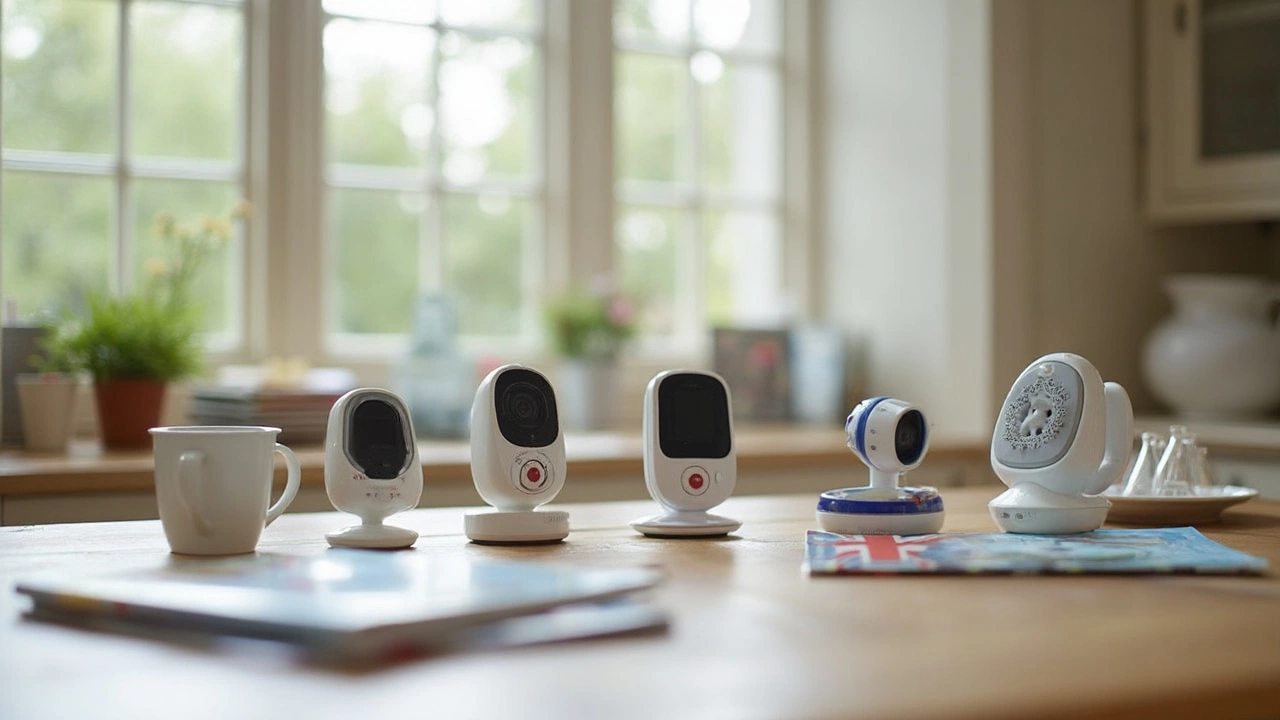
Types of Baby Monitors: Not All the Same
Not every baby monitor blasts the same level of radiation. Some barely create a blip, while others use enough wireless tech to rival your home internet. The way a monitor works—and how much EMF exposure it creates—comes down to the style it uses for sending signals.
Let’s break down the four main types you’ll see in the store:
- Analog Monitors: These are old-school. They use basic radio waves, like a walkie-talkie. They're much simpler and send signals over lower frequencies. You won’t get super-clear audio or fancy features, but they usually keep RF radiation pretty low.
- Digital Monitors (DECT): Most new monitors are digital and use DECT (Digital Enhanced Cordless Telecommunications). These give you clearer sound and a longer range. But they pump out more EMF than analog models, kind of like the difference between an old cordless phone and your smartphone.
- Video Baby Monitors: Want to see your kid in HD? These connect through Wi-Fi or use their own radio systems. If it’s Wi-Fi, the monitor sends a steady stream of RF signals—sometimes even all night. That means more EMF exposure compared to just audio monitors.
- Smart Monitors: These things are like a baby monitor and a home security system had a baby. They’re always online, connect with your phone, and even offer movement or breathing tracking. Super convenient, but they run heavy on wireless technology and can have some of the highest baby monitor radiation levels.
Here’s a simple table showing the typical EMF levels for each type. The numbers aren’t exact for every model, but they give you a ballpark idea.
| Type | EMF Exposure (approx.) | Extras |
|---|---|---|
| Analog Audio | Low | Basic audio only |
| Digital DECT Audio | Medium | Clearer sound, longer range |
| Wi-Fi Video | High | Video, wide features, smartphone access |
| Smart Monitors | High | Apps, data tracking, constant connectivity |
So if you just want basic peace of mind and less baby monitor radiation, analog or non-Wi-Fi audio might be good enough. If you want video and smart features, look for models that let you turn off Wi-Fi when not needed or that switch to "sleep mode." The type you choose decides your exposure way more than price or brand name.
Smart Ways to Cut Down on Exposure
If you’re worried about baby monitor radiation or just want to do things by the book, it’s easier than you’d think to lower your baby’s exposure. No need to throw your monitor out the window—just try a few practical tweaks.
- Keep Your Monitor at a Distance: The sweet spot is at least three feet away from the crib. Even the World Health Organization says distance makes a difference with devices that use EMF exposure. Don’t tuck the monitor right onto the mattress or rails.
- Pick Low-EMF Models: Not all wireless baby monitors are the same. Some models advertise "eco mode" or "low emission mode,” cutting unnecessary transmissions when there’s no sound or movement. If the box brags about these features, that’s usually a good sign.
- Turn It Off If You’re Nearby: If you’re cleaning the next room or right outside baby’s door, switch off the monitor. The less time it’s on, the less exposure for everyone.
- Go Analog If You’re Worried: Old-school analog baby monitors emit lower EMF than most digital or Wi-Fi models. You’ll lose out on video and extra features, but you get peace of mind if you’re really focused on minimizing signals.
- Limit Use of Video: Video monitors can emit more signals than audio-only ones, especially models that constantly stream to your phone. Pick audio when you can, or set video to "sound-activated" mode so it’s not running 24/7.
Want to see how much EMF is coming from your monitor? You can buy a cheap EMF meter online. They’re not perfect, but they’ll give you an idea of how things stack up. For curious parents, here’s a quick comparison of different baby monitor types and their typical transmission frequency—the kind of plain data most manuals skip over:
| Monitor Type | Typical Frequency Band | EMF Emission |
|---|---|---|
| Analog Audio | 49 MHz | Low |
| Digital Audio | 1.9 GHz (DECT) | Medium |
| Wi-Fi Video | 2.4 GHz / 5 GHz | High |
| Eco Mode (Digital) | 1.9 GHz (DECT) | Very Low (when idle) |
The right setup comes down to what you value more—features or playing it safe. Either way, these steps can stack the odds in your favor and help you use your baby monitor with confidence.
Do You Even Need to Worry? Key Takeaways
Let’s be real, the phrase “baby monitor radiation” sounds scary, but here’s what science actually tells us. Most baby monitors run on RF signals (radiofrequency), putting them in the same safety ballpark as your Wi-Fi router or cordless phone. No credible studies have pinned serious health risks to the levels of RF coming off baby monitors, even for super young babies.
The World Health Organization puts “possible risk” labels on heavy, chronic exposure to RF—think living near a cellphone tower for years, not a monitor sitting six feet from a crib. The American Academy of Pediatrics hasn’t issued any warnings specifically about baby monitor safety. Most experts say that as long as you don’t have the device basically touching your baby’s head 24/7, the real-world risk is very low.
Still, why not play it safe? Here’s what you can do without going overboard:
- Keep monitors at least 3 feet (about 1 meter) from the crib to slash EMF exposure.
- Pick analog monitors or models with low-emission “eco” or “VOX” modes.
- Turn off monitors when you’re in the room with your baby—zero exposure is always best.
- Read up on a monitor before buying; some brands give exact EMF exposure data if you dig into the manual or website.
Curious how different monitors stack up? Here’s a quick reference on typical RF levels (in microwatts per square meter) based on the monitor type:
| Type | Average RF Output (at 1 meter distance) |
|---|---|
| Analog Audio Monitor | 10-50 μW/m² |
| Digital (DECT) Monitor | 600-4,000 μW/m² |
| Wi-Fi Video Monitor | 500-3,000 μW/m² |
| Eco/VOX Mode | 1-20 μW/m² (only when active) |
So, should you panic and toss out your current monitor? No way. Just keep it a safe distance and look for lower-emission options if it helps you sleep better at night. Out of all the things parents need to stress over, baby monitor risks belong pretty close to the bottom of the list.


